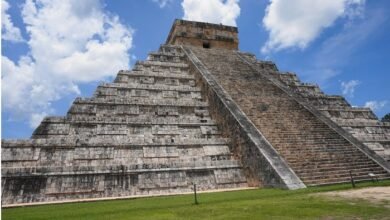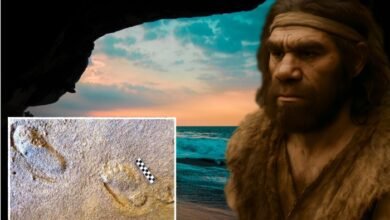Corsica: ‘The Island Of Statue-Menhirs’ – Where Humans Lived At Least 7,000 BC

A. Sutherland – AncientPages.com – On Corsica – ‘the island of statue-menhirs’ – human habitation began at least 7000 BC. The island is home to remarkable granite figures—some 13 feet tall and weighing up to two and a half tons. It’s truly an awe-inspiring sight.
With around 80 menhirs, Corsica stands out from other Mediterranean countries with megalithic sites. Most of these menhirs primarily represent dead heroes, warriors, and chieftains.
Spread over a beautiful area of Filitosa and Stantari, they are among the oldest monumental statues in Europe and have been known to natives for as long as anyone can remember.
The echoes of a grand megalithic era persist predominantly through the Corsican death rituals, which hold significant sway in the customs of this age-old society, especially within rural communities. This enduring tradition has withstood even the Catholic Church’s efforts to infuse Christianity into the island.
The surviving dolmens show that they were designed for collective burial. Statues were discovered by Prosper Merimée, French historian, novelist, and archaeologist, during his survey of the island in 1830. This fascinating legacy of huge stone monuments was left by the indigenous megalithic culture that inhabited Corsica millennia ago and flourished until 1400 BC.
 Picture of several millennia old stones at Filitosa, south of Corsica, France. Image credit: Image credit: Braucher – CC BY-SA 4.0 DEED
Picture of several millennia old stones at Filitosa, south of Corsica, France. Image credit: Image credit: Braucher – CC BY-SA 4.0 DEED
The origin of the name Corsica is often debated and remains a mystery, and the most pre-dawn time of the island is an unknown page in the history of Europe.
The stone figures in Corsica are uniquely aligned, but they do not align with any known astronomical patterns based on the sun’s or moon’s movements. Instead, they follow a north-south direction. This peculiar alignment remains a mystery even today, adding to their intriguing appeal.
People have always been fascinated by megalithic monuments, and standing megaliths have been unearthed on every continent. However, only a few of them have clearly defined anthropomorphic features. The Corsican granite monuments represent one of the best examples.

Left: Anthropomorphic menhir in Tavera, Corsica. Image source – CC BY-SA 3.0: Right: Statue-Menhir of Tavera. Image credit: Asanotori – CC BY-SA 4.0
During an archaeological expedition in 1954, French archaeologist Roger Grosjean discovered a 160-ft high hill with 17 sculptured menhirs in the south of Corsica, at Filitosa, today’s most celebrated prehistoric site. Later, Grosjean unearthed many more of them, even those depicting daggers and swords of an unusual design.
According to him, Corsica’s carved figures may represent the warriors, the enemy chiefs defeated in war by the so-called Torréens, “torre builders” from the eastern Mediterranean who landed on Corsica about 1500 BC.
“For the origin of sculpture, these monumental figures are as important as the cave drawings of Lascaux and Altamira are for the origin of painting. When you look at one, you know it represents someone—someone to whom you could give a name,” according to Grosjean.
One of Grosjean’s theories suggests that they were the Torréens (Torreans ) or “Sea People” (“People of the Sea”), mysterious Mediterranean seafarers who were depicted on the Corsican monuments. Those seafarers and destructive warriors invaded neighboring cultures like Syria, Palestine, Cyprus, eastern Anatolia, and Egypt in the 2nd millennium BC.
They built dome-shaped temples in Corsica, Sardinia, and other places in the Mediterranean.

Filitosa IX, a menhir statue in Filitosa (Corse-du-Sud, France). Image credit: Blejuez – CC BY-SA 3.0 DEED
Some ancient records say the Torréens destroyed many sculptures using their parts to construct their fortresses. According to other theories, they are representations of humans or superhuman figures. Myths of various cultures worldwide widely support this point of view.
The Greek legend tells about Deucalion and Pyrrha, who, after the Flood, threw stones behind their backs and saw them turn into men and women to repopulate the planet.
Corsica has been occupied continuously since the Mesolithic era. Even after the Greek and Roman invasions, Corsicans continued to worship the figures. Even today, the inhabitants of this mysterious island are very proud of the enigmatic aspect of their history.
Written by – A. Sutherland AncientPages.com Staff Writer
Copyright © AncientPages.com All rights reserved. This material may not be published, broadcast, rewritten or redistributed in whole or part without the express written permission of AncientPages.com
Expand for references
References:
O’Carroll O, Atkinson D. Corsica
D. Facaros, M. Pauls, Corsica





